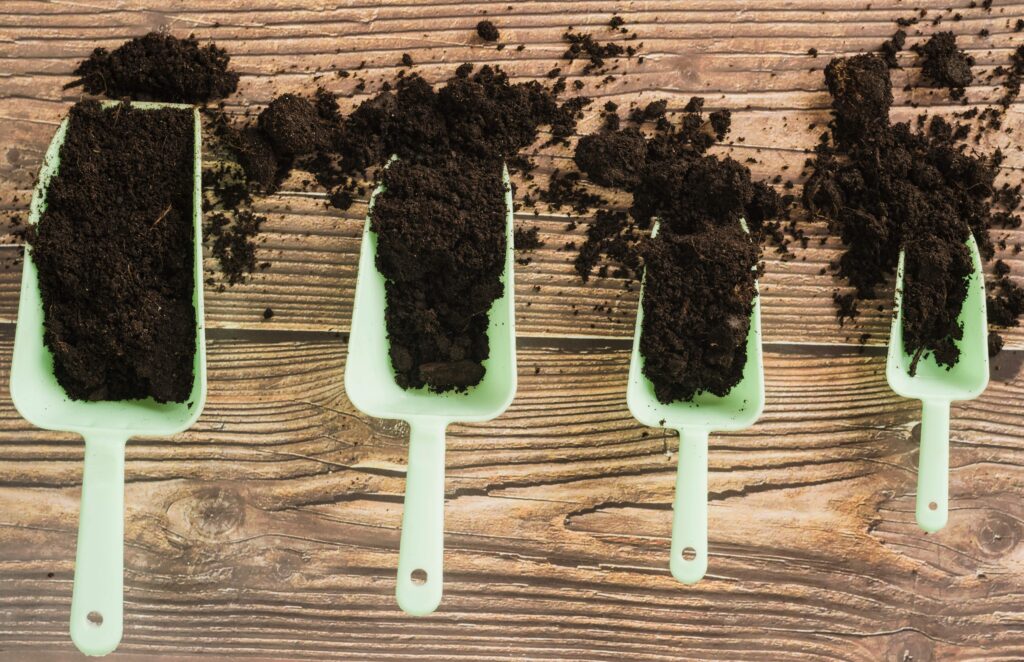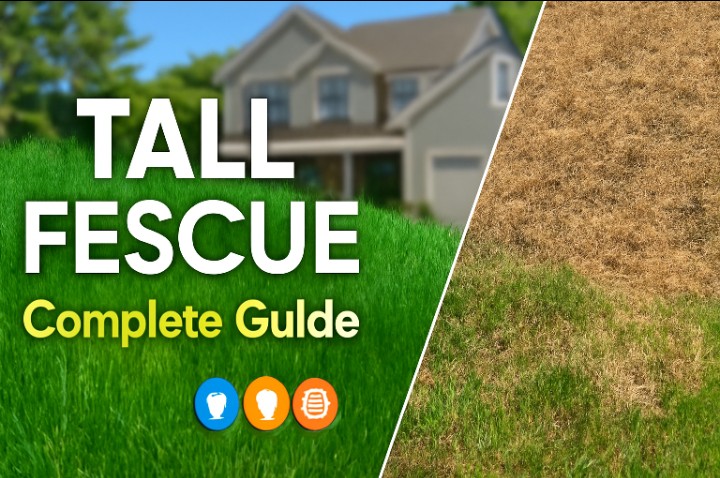You water your lawn religiously. You fertilize it every spring. Yet your grass looks tired and patchy. Sound familiar?
Here is the thing most homeowners miss. Your soil’s pH might be the culprit. It is like trying to grow plants in the wrong environment. I have helped thousands of homeowners transform their lawns. The secret? Getting the soil pH right first. Everything else follows naturally.
This guide will show you exactly how to test your soil pH. You will learn which methods work best. Plus, I will share real stories from homeowners who fixed their lawn problems.Ready to unlock your lawn’s potential? Let’s dive in.
Understanding Soil pH: The Foundation of Lawn Health
Think of pH as your soil’s personality. It ranges from 0 to 14. Seven is neutral. Below seven is acidic. Above seven is alkaline.
Most grass types love slightly acidic to neutral soil. Here’s what your grass prefers:
Cool-season grasses like Kentucky bluegrass thrive between 6.0-7.0. These include fescue and ryegrass too. They are common in northern states.
Warm-season grasses have more specific preferences:
-Bermuda grass: 5.8-7.0 (can tolerate up to 8.0)
-Zoysia grass: 5.0-8.5 (very adaptable to various pH levels)
-St. Augustine grass: 5.5-7.0
-Centipede grass: 5.0-6.0 (prefers moderately acidic conditions)
Here is why pH matters so much. Nutrients get locked up in wrong pH conditions. Your grass can not access them. It is like having food behind a locked door.
Take iron, for example. In alkaline soil, iron becomes unavailable. Your grass turns yellow despite good fertilization. Homeowners often blame their fertilizer. The real issue? Wrong pH.
Different regions have different pH challenges. The Northeast typically has acidic soil. Rain washes away alkaline minerals over time. The Southwest often has alkaline soil. Less rainfall means minerals accumulate.
Sarah from Portland learned this the hard way. She spent $300 on premium fertilizer. Her lawn still looked terrible. One pH test revealed soil at 5.2. Too acidic for her grass type.
After adjusting pH to 6.5, her lawn transformed. Same fertilizer but completely different results. The nutrients finally became available.
Warning Signs Your Lawn Needs pH Testing
Your lawn tells you when pH is wrong. You just need to know the signs.
Yellow grass despite proper watering screams pH problems. Nutrients are not reaching the roots. The grass literally starves.
Patchy, thin growth is another red flag. Some areas might look okay. Others struggle constantly. This often happens with uneven pH levels.
Moss growth indicates acidic conditions. Moss loves low pH soil. If you see moss spreading, test immediately.
Poor fertilizer response frustrates many homeowners. You apply expensive fertilizer. Nothing changes. Wrong pH locks up those nutrients.
Increased weed problems often follow pH issues. Weeds adapt better than grass. They take over when grass struggles.
Mike from Denver noticed these exact signs. His bluegrass lawn had yellow patches everywhere. Weeds grew like crazy. Professional fertilization did not help.
One soil test revealed pH at 8.2. Way too high for bluegrass. He lowered it to 6.8. Within six months his lawn was magazine-worthy.
Slow recovery from foot traffic suggests pH problems. Healthy grass bounces back quickly. Stressed grass takes forever.
Poor seed germination rates also indicate pH issues. Seeds need specific conditions to sprout. Wrong pH kills germination success.
Test your soil if you notice these signs. Do not wait for the problem to worsen.
Testing Methods: Finding Your Best Option
You have several testing options. Each has pros and cons. Your choice depends on budget and accuracy needs.
Digital pH meters cost $15-50. They are reusable and give instant results. Just stick them in moist soil. The reading appears immediately.
Popular 2025 models include the Sonkir 3-in-1 meter. It tests pH, moisture and light. The XLUX meter is another favorite. Both are under $15.
The downside? They need calibration. Batteries die at inconvenient times. Cheap meters are not always accurate.
pH test strips cost $5-15. They are simple and battery-free. Mix soil with water. Dip the strip. Compare colors to the chart.
Strips work well for quick checks. They are perfect for multiple locations. However, color matching can be tricky. Lighting affects accuracy.
Soil pH test kits use chemical reactions. They cost $10-25. Mix soil with provided solutions. The color change indicates pH level.
These kits are fairly accurate. They do not need batteries. But they are one-time use. Color interpretation takes practice.
Professional testing costs $20-50. Your county extension office often provides this service. Private labs offer more detailed analysis.
Professional tests include nutrient levels. They provide specific recommendations. Turnaround time is usually 1-2 weeks.
Smart technology is entering soil testing. App-connected sensors monitor pH continuously. They sync with your smartphone. Some integrate with irrigation systems.
These smart sensors are becoming more common but still represent an emerging technology. Perfect for tech-savvy homeowners who want continuous monitoring.
Lisa from Chicago tried three different methods. She wanted to compare accuracy. The professional test showed pH 6.2. Her digital meter read 6.0. Test strips indicated 6.5.
All methods pointed to slightly acidic soil. The professional test provided the most detail. But her digital meter was accurate enough for ongoing monitoring.
Step-by-Step Testing Process
Timing matters for accurate results. Test when soil is moist but not soggy. Avoid testing after heavy rain. Wait at least 24 hours.
Don’t test recently fertilized areas. Fertilizer affects pH readings temporarily. Same goes for pet spots. Animal waste skews results.
Avoid areas near foundations. Concrete affects soil pH. Stay away from compost piles too. They create localized pH changes.
Sampling technique makes a difference. Use a clean spade or soil auger. Dig down 4-6 inches. This is where grass roots live.
Take samples from multiple locations. Your lawn is not uniform. Mix 5-8 samples for accurate representation. This averages out variations.
Remove debris like leaves and rocks. Let soil dry slightly if it is muddy. Wet soil can affect some testing methods.
For digital meters: Calibrate first using provided solutions. Insert the probe into moist soil. Wait for the reading to stabilize. This takes 60-90 seconds.
Clean the probe between tests. Soil residue affects accuracy. Store meters properly to extend battery life.
For test strips: Mix one part soil with two parts distilled water. Stir well and let settle. Dip the strip for specified time. Compare immediately to color chart.
Room temperature affects color development. Test in good lighting. Fluorescent lights can skew color perception.
For professional samples: Label clearly with your name and address. Include lawn area size. Note any recent treatments. Package according to lab instructions.
Most labs want 1-2 cups of soil. Double-check their requirements. Some offer online result portals. Others mail printed reports.
John from Austin tested his St. Augustine lawn. He took samples from 8 different spots. The front yard averaged 7.8 pH. The backyard was 6.9.
This explained why his front yard struggled. St. Augustine prefers 5.5-7.0. His backyard was perfect. The front needed pH adjustment.
Reading and Understanding Your Results
pH numbers tell a story. Each decimal point matters. A pH of 6.0 is ten times more acidic than 7.0.
For cool-season grasses: 6.0-7.0 is ideal. Below 6.0 is too acidic. Above 7.5 is too alkaline. Your grass will struggle outside this range.
For warm-season grasses:
Requirements vary by species:
– Bermuda grass: 5.8-7.0 (can tolerate up to 8.0)
– Zoysia grass: 5.0-8.5 (extremely adaptable)
– St. Augustine grass: 5.5-7.0
– Centipede grass: 5.0-6.0 (thrives in acidic conditions)
Small adjustments need 0.2-0.5 pH units. These are easy fixes. Major corrections involve 1.0+ pH units. These take time and patience.
Consider your soil type too. Clay soil holds pH changes longer. Sandy soil changes quickly but does not hold amendments well.
Existing lawn health affects treatment success. Healthy grass recovers faster from pH adjustments. Severely damaged lawns need more time.
Regional factors matter. Areas with high rainfall tend toward acidic soil. Desert regions usually have alkaline soil. Your location predicts likely problems.
Maria from Phoenix tested her Bermuda grass lawn. The reading was 8.4. While Bermuda can tolerate higher pH than most grasses, this was still excessive. She understood why her grass looked pale.
Even though Bermuda grass can handle up to pH 8.0, readings above this range can still limit nutrient availability. The yellowing color made sense.
She planned a gradual pH reduction to 7.2. This would take several months but would optimize nutrient availability for her lawn.
Fixing High pH (Alkaline Soil)
Alkaline soil is common in western states. It locks up iron and phosphorus. Your grass can’t access these vital nutrients.
Sulfur is your best friend for lowering pH. Elemental sulfur works slowly but effectively. It converts to sulfuric acid naturally. This process takes 2-4 months.
Apply 1-2 pounds per 1,000 square feet. Spread evenly using a broadcast spreader. Water thoroughly after application. The sulfur needs moisture to activate.
Aluminum sulfate works faster than elemental sulfur. Results appear in 4-6 weeks. But it is more expensive. Use it for quick fixes only.
Organic matter helps long-term. Compost, pine needles, and peat moss gradually lower pH. They improve soil structure too.
Coffee grounds from your local shop work well. Mix them into the soil. They are slightly acidic and improve drainage.
Iron sulfate serves double duty. It lowers pH and adds iron. Perfect for grass showing iron deficiency. Apply in early spring or fall.
Timing matters for pH amendments. Spring application prepares soil for growing season. Fall application works through winter. Avoid summer applications during drought.
Water requirements vary by amendment. Sulfur needs consistent moisture. Organic matter needs less water. Follow package directions carefully.
Safety first when handling amendments. Wear gloves and eye protection. Store materials away from children and pets. Some amendments can irritate skin.
Bob from Las Vegas had pH 8.6 soil. His Bermuda grass looked terrible. Yellow patches covered 60% of his lawn.
He applied elemental sulfur in March. By June, his pH dropped to 7.4. His grass started greening up. By fall, it was beautiful.
The key was patience. He didn’t over-apply. Gradual changes work better than shock treatments.
Fixing Low pH (Acidic Soil)
Acidic soil is common in eastern states. High rainfall leaches alkaline minerals. Your grass can’t absorb nutrients properly.
Lime is the traditional solution for acidic soil. Calcitic lime adds calcium. Dolomitic lime adds calcium and magnesium. Choose based on your soil test results.
Apply 25-50 pounds per 1,000 square feet. Spread evenly with a broadcast spreader. Water lightly after application. Lime needs time to react.
Pelletized lime is easier to spread than powder. It’s less dusty and more convenient. But it costs slightly more than traditional lime.
Wood ash works faster than lime. Use ash from hardwood fires only. Softwood ash contains harmful chemicals. Apply sparingly – it’s very potent.
Crushed oyster shells work in coastal areas. They’re available at garden centers. They release calcium slowly over time.
Bone meal raises pH while adding phosphorus. It’s organic and safe around pets. Apply in spring or fall. Avoid during hot summer months.
Application timing affects success. Fall applications work through winter. Spring applications prepare for growing season. Avoid frozen or waterlogged soil.
Lime takes 3-6 months to show full effects. Be patient with the process. Quick fixes often cause more problems.
Weather considerations matter too. Apply before rain if possible. Moisture helps lime dissolve. Avoid windy days with powder lime.
Jenny from Portland had pH 5.1 soil. Her fescue lawn struggled constantly. Moss was taking over everywhere.
She applied pelletized lime in October. By spring, her pH was 6.4. The moss disappeared. Her grass thickened up beautifully.
The fall timing was perfect. Winter rains helped dissolve the lime. Spring growth responded immediately.
Maintaining Perfect pH Long-Term
Regular testing prevents major problems. Test annually if possible. Spring testing guides your treatment plans. Fall testing checks summer changes.
pH naturally drifts over time. Rainfall gradually acidifies soil. Fertilizers can shift pH too. Organic matter decomposes and affects pH.
Fertilizer choice impacts long-term pH. Ammonium-based fertilizers lower pH. Nitrate-based fertilizers raise pH slightly. Choose based on your soil’s tendency.
Organic matter helps buffer pH changes. Compost moderates both high and low pH. Add 1-2 inches annually. Work it into the top 6 inches.
Watering practices affect pH over time. Hard water raises pH gradually. Rainwater is naturally acidic. Consider this in your maintenance plan.
Seasonal variations are normal. Summer heat can raise pH. Winter moisture can lower it. Don’t panic over small fluctuations.
Minor adjustments beat major corrections. Small, regular treatments work better. They’re less stressful for your grass.
Integration with lawn care maximizes results. Time pH adjustments with overseeding. Coordinate with fertilization schedules. Plan around pest treatments.
Prevention costs less than correction. Regular testing catches problems early. Small adjustments are cheaper than major fixes.
Record your results over time. Track what works in your yard. Every lawn is unique. Your records guide future decisions.
Tom from Minneapolis tests every spring. He is maintained perfect pH for five years. His secret? Small, consistent adjustments.
He adds compost every fall. This buffers pH changes naturally. His lawn stays healthy with minimal intervention.
Common Mistakes That Cost Money
Testing errors waste time and money. Contaminated samples give wrong results. Clean tools prevent cross-contamination. Use fresh water for strip tests.
Timing mistakes are expensive. Testing after fertilization skews results. Wait 4-6 weeks after any treatments. Test when soil is properly moist.
Insufficient sampling misses problems. One sample does not represent your entire lawn. Take multiple samples from different areas. Mix them for average conditions.
Treatment mistakes can damage grass. Over-applying amendments burns roots. Under-applying wastes money. Follow label directions exactly.
Expecting instant results leads to over-treatment. pH changes take time. Patience prevents costly mistakes. Document changes over months, not weeks.
Ignoring soil type affects treatment success. Clay soil holds amendments longer. Sandy soil drains quickly. Adjust your approach accordingly.
Seasonal errors reduce effectiveness. Frozen soil will not react to amendments. Drought-stressed grass can not handle changes. Time treatments properly.
Product selection matters more than price. Cheap test kits are not always accurate. Quality amendments work better. Research before buying.
Combining incompatible products creates problems. Some fertilizers and pH amendments react badly. Read labels carefully. Space applications appropriately.
Steve from Detroit made several mistakes. He tested after fertilizing. Applied too much lime at once. Expected instant results.
His grass turned yellow and patchy. The over-liming locked up nutrients. It took six months to recover.
Now he follows proper procedures. His lawn is healthier than ever. The mistakes taught valuable lessons.
Your Action Plan for Perfect pH
Start by testing your current soil pH. Use any method that fits your budget. Professional testing provides the most detail. DIY methods work for basic needs.
Identify your grass type and ideal pH range. Cool-season grasses need 6.0-7.0. Warm-season grasses have species-specific requirements. Regional variations exist within these ranges.
Create a testing schedule for long-term success. Annual testing catches problems early. Spring testing guides treatment plans. Fall testing evaluates summer changes.
Choose appropriate amendments based on your results. Sulfur lowers pH gradually. Lime raises pH slowly. Organic matter buffers changes naturally.
Time your applications for maximum effectiveness. Spring applications prepare for growing season. Fall applications work through winter. Avoid extreme weather conditions.
Monitor progress over time. pH changes happen slowly. Document results every few months. Adjust treatments based on grass response.
Integrate with overall lawn care for best results. Coordinate with fertilization schedules. Plan around overseeding projects. Consider pest and disease treatments.
Be patient with the process. pH adjustment takes time. Quick fixes often create new problems. Consistent, gradual changes work best.
Keep detailed records of what works. Every lawn is unique. Your documentation guides future decisions. Track costs and results together.
Invest in quality tools for ongoing monitoring. Good pH meters last for years. Accurate test kits prevent costly mistakes. Professional testing provides baseline data.
Remember Sarah from Portland? She follows this exact plan. Her lawn went from embarrassing to envious. The key was consistent, patient pH management.
Your lawn is potential is waiting. Proper pH unlocks nutrient availability. Healthy grass resists pests and diseases. Beautiful lawns start with balanced soil.
The investment in pH testing pays dividends. Fertilizers work better in proper pH. Grass grows thicker and greener. Your property value increases too.
Don’t let another growing season pass. Test your soil pH this week. Start the journey to your dream lawn. Your neighbors will wonder what your secret is.
The End: pH Success Stories
David from Seattle transformed his lawn completely. His initial pH was 5.3. Way too low for his grass mix. Yellow patches covered most areas.
He applied lime gradually over eight months. Tested every two months. Adjusted applications based on results. His patience paid off beautifully.
By year two, his pH stabilized at 6.6. His grass was thick and green. The transformation was absolutely stunning. Neighbors asked for his secret constantly.
The key was following proper procedures. No shortcuts or quick fixes. Just consistent, patient pH management. The results speak for themselves.
Your lawn can have the same transformation. Start with accurate pH testing. Choose appropriate amendments for your situation. Be patient with the process.
Perfect pH is the foundation of lawn success. Everything else builds on this base. Get it right, and your lawn will thrive. Your investment will pay dividends for years.
The 2025 growing season starts soon. Make this the year you fix your soil pH. Your future self will thank you. Your lawn will be the envy of the neighborhood.
Test, treat, and transform. Your perfect lawn is waiting.






